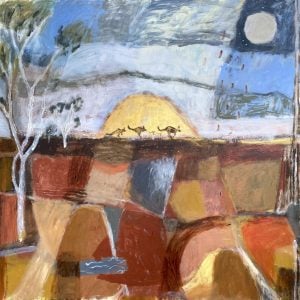The Art of Investing
To many people the idea of investing in art is a foreign one. Surely art is only for aesthetic purposes or the elite who can afford multi million dollar collections?
And what about investing in Australian art?
In fact art has a fascinating and sometimes volatile economic history and is increasingly considered a genuine alternative investment class, one capable of not only helping to diversify a portfolio dominated by traditional asset classes such as shares and property but also capable of outperforming such traditional investments. Growing numbers of Australians have been investing in art through their self managed super funds, and whilst the rules around this have become quite strict it is still a surprisingly popular form of investment.
The world’s most watched art Index, the Mei Moses All Art Index has in fact produced compound annual returns (CAR) of 4.9% over the last 10 years vs the S&P index CAR of 1.35%. No doubt the global financial crisis has greatly impacted these returns for both asset classes but it is interesting that artwork out performed shares. Over the last 50 years the Mei Moses has largely kept up with the S&P producing a CAR of 9.23% vs a CAR from equities of 9.73%.
So, for those of who’ve never heard of the Mei Moses All Art Index, why invest in art? Well, most people buy art because they love it. In fact, people who do this are often unknowingly abiding by the golden rule of investing in art. According to Michelle Seth of Eva Breuer Gallery “you must only buy art because you have fallen in love with it.” So buy what you love and brings you pleasure.
So what next?
Well, according to Tim Olsen, art advisor and son of the famous artist John Olsen, “art can be a great investment if properly advised”. For those looking to buy artwork, which will appreciate in time, it’s not only important to choose the right artist but also the right painting. You need to buy one that you love and that other people will too, and look after it carefully. Damaged artwork is worth significantly less. In short do your research, perhaps get professional advice and in the very least choose carefully.
What if I don’t have much money to invest?
Buying contemporary works from artists, particularly early on in their career, often means the works wont be too expensive. This can also prove extremely lucrative in rare cases. According to Alistair Bailey, Executive Director of at Art Equity, “the best investment in art over the past 30 years has happened in the primary market: an exhibition or work purchased directly from the artist”. For example, Andy Warhol’s first portrait sold on the primary market for $1600 in 1964. It May 2011 it was sold at Christies Auction House for approximately $38.4 million. This is a nice little bonus for having the pleasure of such a picture in your collection.
What about Australian Art?
There are 20 Australian artists whose paintings have breached the $1 million mark; some of whom; Jeffrey Smart, John Olsen, Charles Blackman and Ron Mueck have seen their paintings fetch above this milestone value within their lifetimes. In 2010, Sir Sidney Nolan’s famous painting ‘First Class Marksman’ painted in 1946 and one of 27 paintings depicting Ned Kelly sold to the Art Gallery of New South Wales for $4.5m. It had last sold to the Vizard Trust for in 1992 for a reported $400,000 meaning a gross profit of $4.1m and return of over 1100%. This sale largely confirms Sir Sidney Nolan as Australia’s top artist. Prior to this sale artworks from Brett Whiteley and John Back were seen vying for top honours in the auction market.
Generally speaking buying the best painting from an artist who has won prizes, or whose work is collected by the state or national gallery greatly increases the chance of their art becoming more valuable over time.
Of course there are many risks to consider before investing in art, some of which include; illiquidity, high transaction costs on the secondary market (often 10-20%), provenance (ie risk of buying a fake or stolen piece) and volatility in art and global financial markets. However, the positives can include; capital appreciation, potentially a rental return (it is becoming increasingly common for companies to rent their office artwork), portfolio diversification and simply the pleasure of owning great art.
In short, there is a lot of investment potential in the Australian and international art market. There are of course many risks and considerations before delving into the art investment world, but if you simply buy art because you love it, you’ll never regret it. And who knows, you might just stumble across the next Sidney Nolan or Brett Whiteley.











